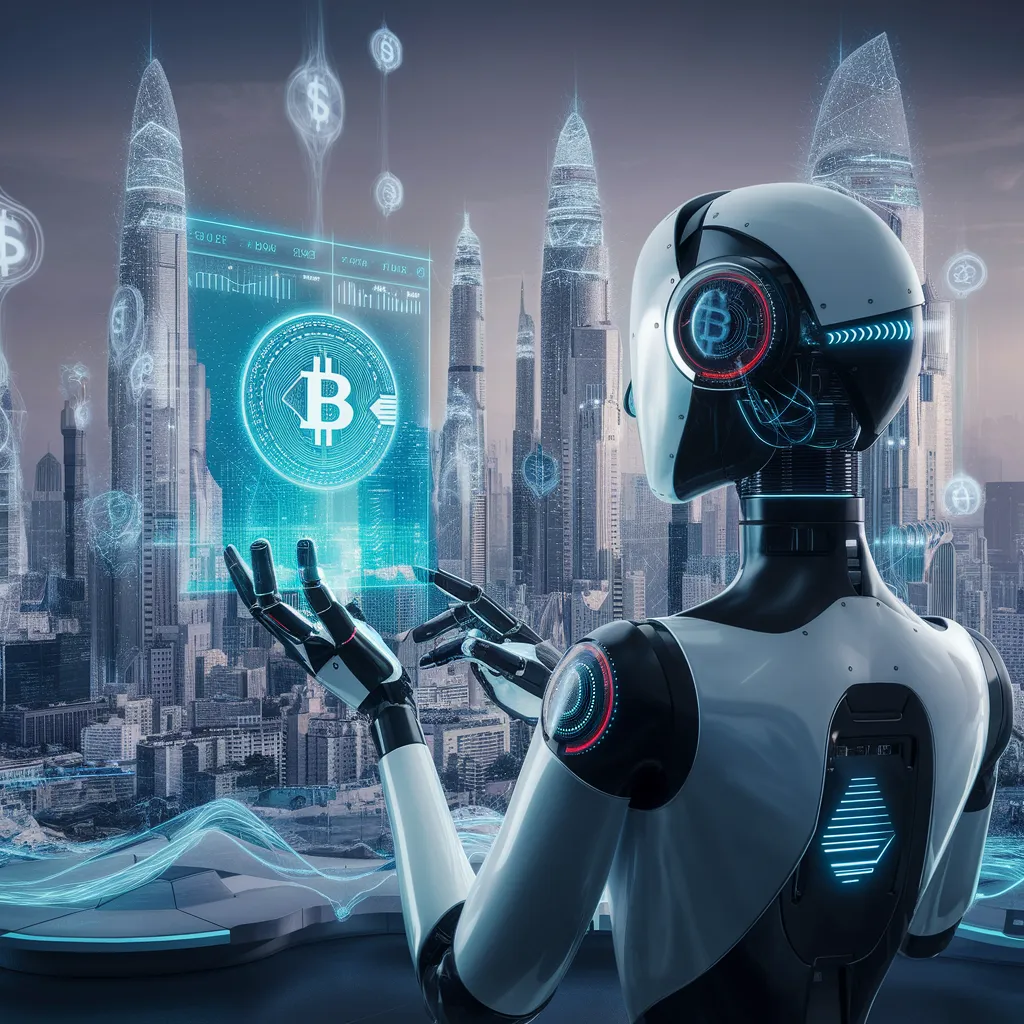This is something we discussed over the last few years.
Web 3.0 is much bigger than Web3. Here we are dealing with an assortment of technologies feeding into the next generation Internet. The key here is it will be spatial, i.e. extending beyond out computers.
For this reason, some of the possible components in the future are AI, crypto, blockchain, quantum, robotics, biotech, and different energy sources. Many of these will converge, altering the world as we know it. In my mind, it is only a question of when this takes place to a significant degree.
We are already seeing progress in many of the areas.
One that is of interest to people involved in cryptocurrency is the fact that AI and crypto are going to converge. This will take place in a multitude of ways. Over time, we discussed a few of them.
Brian Armstrong came out with an idea this week that is worth mentioning.

Image generated by Ideogram
Web 3.0: AI and Crypto Together
Both AI and crypto were developed in the physical world. They reside completely in this realm.
Innovators are only starting to change this by Moving AI into the real world. This is often phrased "embedded AI", meaning it is put in devices that are mobile throughout society. The present use cases are vehicles and robotics. These products are being designed with cameras and sensors which are constantly generating data and pushing it back to the cloud.
Of course, the discussion about jobs and the future of incomes enters the conversation quickly. This is where Armstong's idea shows how Web 3.0 can alter things.
It actually is a very simple solution.
He mentioned that large language models (LLMs) should integrate crypto wallets. LLMs are basically machine learning models that are designed specifically to understand as well as generate human language text. OpenAI’s ChatGPT is the widely used LLM-based tool today.
Essentially he is proposing that the LLMs agents are designed to enhance the crypto holdings.
Armstrong further mentioned that by integrating crypto wallets into LLM models, we can enter a world where AI agents will be able to complete tasks on behalf of users and participate in the crypto economy. These tasks could include crypto trading and analyzing market trends, among others.
A simple idea that will provide access to financial automation for any crypto user. This is not a bad idea albeit one that speculation and financialization.
Is there another path to pursue?
Tokenization of Everything
We often mention the tokenization of everything. This is where the world is going in my opinion.
If this is the case, what about AI agents. Aren't they part of the world?
Here is where we could see a massive shift. It is really just taking Armstrong's idea and expanding it a bit further. Instead of focusing upon the financial aspect, how about the business AI agents conduct.
For example, as agents are built upon the different models, it is possible for people to own a piece of them. This is where tokenization and the idea of digital real estate enters. As agents begin to engage in economy productivity, the revenue they generate could be, at least in part, fed to the model. This would be the distribution mechanism for who has stake in the model.
When we look at replacing income capital, staking capital suddenly can provide a much larger impact.
The Connection of Agents
The Internet made the personal computer extremely valuable. Before that, one could create a document, keep a budget or play some games. The utility of the personal computer was limited.
This all changed with the Internet. Today, we have tens of billions of devices connected, most that can talk to each other. Basically, value exploded when computers started talking to other computers.
AI agent will likely take the same path.
As separate entities, they have a bit of utility. However, I forecast the real value explosion coming when agents start to interact together. This stems from the concept that generative AI is really a new form of computing. Like the personal computer, the "agent computer" will have more value when connected.
Of course, we revert back to the same basic question: who will reap the benefits?
If we allow the major corporations, i.e. Big Tech, to absorb most of the profits, we will be presented with challenges beyond what society can solve.
Here is where tokenization enters.
It allows for the merging of crypto and AI in a way that benefits those who are holding the token. When people start to realize this potential, they will likely flock towards it.
Brian Armstong is correct in his thinking. It is time to start processing ideas of how to merge AI and crypto. This is where things are heading. The question is who owns the financial benefits.
It is a problem that tokenization solves.